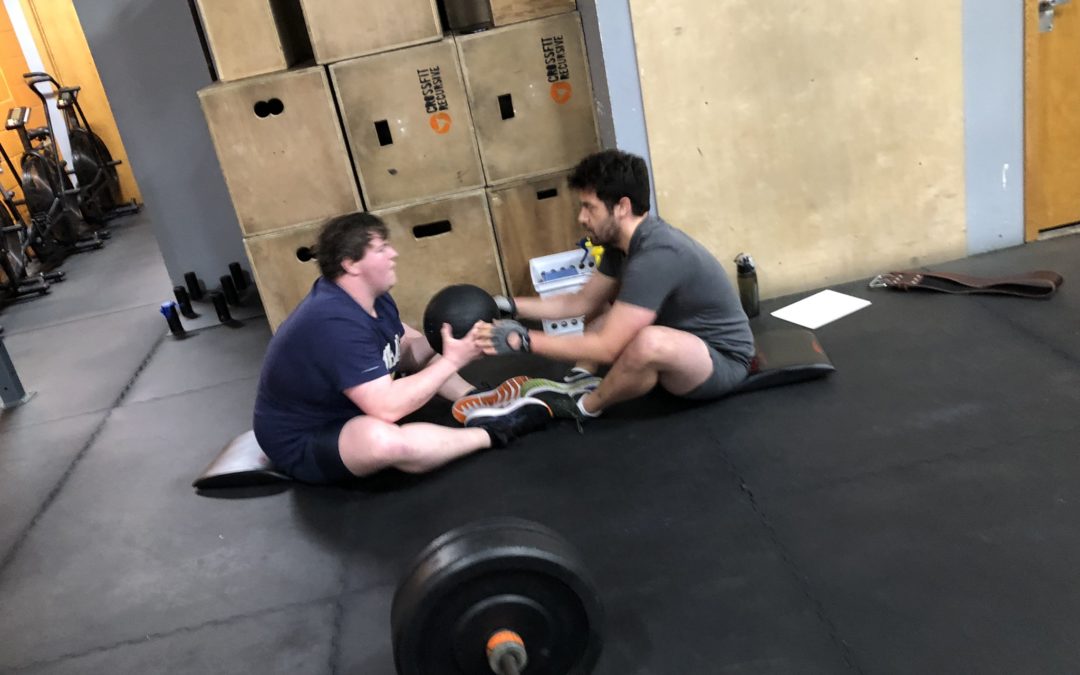One of my favorite workouts is the Benchmark Annie (50-40-30-20-10 Double Unders and Sit Ups.) When you see Sit Ups in a workout do you think of them as an easy movement where you can catch your breath before you go on to the real movements? Do you think of them as a great movement to work on your abs? How about a simple movement to work your core?
Today, I would like to talk more about the Sit Up. Why we do it. How to do it properly. And even how to do it more efficiently.
WHY We Do Sit Ups
What is their purpose? Well, to start, they are simple and effective. Sit Ups use your body weight to strengthen and tone core-stabilizing ab muscles. Have you heard the term midline stabilization? It is vital to most things we do in the gym. You want to keep your spine neutral under load at all times. Sit Ups also help you with good posture by working your lower back and glutes. And they will help reduce your risk of back pain and injuries.
As a bonus, Sit Ups and the core strength and stability they work will also improve your muscle mass, athletic performance, balance, stability, and flexibility.
Using an Abmat
Sit Ups can have a bad reputation for being dangerous and causing low back pain. When the hip flexor muscles are too strong or too tight, they can ‘tug’ on the lower spine, which can create low back discomfort. This is why we prefer to use an abmat (and butterfly feet, as we’ll discuss below) to get all the benefits of the Sit Up, without any of the damage to the lower back due to bad form or a flat back on a floor.
You have likely seen (and probably used) an abmat before. There are many different kinds and sizes and they come in all different colors branded by many different companies. Whatever kind you use, they have a very distinct shape. You can place either end of the abmat under your tailbone, depending on your lumbar curve (most people will sit in the bigger end.)
Positioned under the lower back (the lumbar curve), the AbMat enables a full extension of the abdominals at the beginning of a sit-up by tilting the spine, which is not possible on a flat surface. It allows the abs to move through their full and available range of motion. It also stabilizes the pelvis as you rise up, allowing the abs to fully contract. It allows for the extension needed in the lumbar spine and the anterior tilt in the pelvis, thereby giving the abdominal muscles what they are built for – full range, elongation, and forceful contraction. The result is a more efficient and complete core training of the abdominal, oblique, and back muscles.
Butterfly Your Feet
In order to make sure that you are using all of those awesome core muscles, you will need to disengage your hip flexors (the muscles that run from the thighs to the lumbar spine in the lower back). This will force the use of your ab muscles. If given a choice, our bodies will default to the bigger and easier to use quad muscles to do the work. And for those with tight hips, this position will mobilize the groin and open up your hip rotators (which are usually tight on most men.) And when those areas are loose, it’s easier to squat, deadlift, lunge, and run!
Ensuring Full Range of Motion
To get the most out of the movement, we need the full range of motion to make sure all the muscles are getting used to their full extent. As you go back to the ground, shoulders hit the floor. To make sure that happens, reach your hands back to touch the floor behind you. As you come back up, touch the floor in front of you to ensure your shoulders go forward of your hips. This isn’t a crunch – with a larger range of motion, Sit Ups target more muscles than crunches and static core exercises.
Doing Sit Ups is about way more than just trying to get a six pack!

